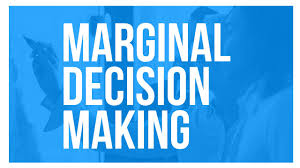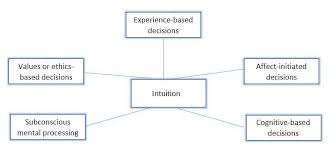Consultative Decision Making: A Collaborative Approach to Better Decisions
Consultative decision making is a process that involves seeking input and feedback from relevant stakeholders before making a final decision. This approach values collaboration and communication, allowing for a more inclusive decision-making process.
One of the key benefits of consultative decision making is that it allows for a diversity of perspectives to be considered. By involving various stakeholders in the decision-making process, different viewpoints, insights, and expertise can be taken into account, leading to more well-rounded and informed decisions.
Furthermore, consultative decision making fosters a sense of ownership and buy-in among stakeholders. When individuals feel that their opinions are valued and taken into consideration, they are more likely to support and implement the final decision.
Effective communication is essential in consultative decision making. Clear and transparent communication ensures that all stakeholders understand the rationale behind the decision-making process and feel informed throughout each step.
In conclusion, consultative decision making is a collaborative approach that can lead to better decisions by incorporating diverse perspectives, fostering ownership among stakeholders, and promoting effective communication. By embracing this approach, organizations can enhance their decision-making processes and outcomes.
9 Benefits of Consultative Decision Making: Enhancing Collaboration, Trust, and Quality
- Incorporates diverse perspectives and insights.
- Fosters a sense of ownership and buy-in among stakeholders.
- Promotes collaboration and teamwork.
- Enhances the quality of decision-making by considering multiple viewpoints.
- Increases stakeholder engagement and satisfaction.
- Encourages open communication and transparency.
- Builds trust among team members and stakeholders.
- Leads to more well-rounded and informed decisions.
- Helps identify potential risks and opportunities through varied input.
Challenges of Consultative Decision Making: Six Key Drawbacks
- Time-consuming process due to the need to gather input from multiple stakeholders.
- May lead to conflicts or disagreements among stakeholders with differing opinions.
- Potential for decision-making to be influenced by individuals with louder voices or stronger personalities.
- Risk of decision paralysis if consensus cannot be reached among stakeholders.
- Difficulty in maintaining confidentiality and privacy when involving a large number of people in the decision-making process.
- Possibility of diluting accountability as responsibility for decisions may become unclear with multiple contributors.
Incorporates diverse perspectives and insights.
Consultative decision making stands out for its ability to incorporate diverse perspectives and insights, making it a valuable approach in ensuring well-rounded and informed decisions. By involving a range of stakeholders with varying backgrounds, experiences, and expertise, this method allows for a comprehensive examination of all aspects related to the decision at hand. Embracing diverse perspectives not only enriches the decision-making process but also increases the likelihood of considering innovative solutions and addressing potential blind spots that may have been overlooked otherwise. Ultimately, by valuing and integrating different viewpoints, consultative decision making paves the way for more robust and inclusive outcomes that align with the needs and interests of all involved parties.
Fosters a sense of ownership and buy-in among stakeholders.
Fostering a sense of ownership and buy-in among stakeholders is a significant advantage of consultative decision making. When individuals are actively involved in the decision-making process and their opinions are valued, they are more likely to feel a sense of responsibility for the outcome. This ownership leads to increased commitment and support for the decision, as stakeholders feel invested in its success. Ultimately, this sense of ownership and buy-in can contribute to smoother implementation and better overall outcomes for the organization or team.
Promotes collaboration and teamwork.
Consultative decision making promotes collaboration and teamwork by involving relevant stakeholders in the decision-making process. By seeking input and feedback from team members, individuals feel valued and included, fostering a sense of teamwork and cooperation. This collaborative approach encourages open communication, idea sharing, and mutual respect among team members, ultimately leading to more innovative solutions and stronger relationships within the team.
Enhances the quality of decision-making by considering multiple viewpoints.
Consultative decision making enhances the quality of decision-making by considering multiple viewpoints. By incorporating diverse perspectives from relevant stakeholders, this approach ensures that all angles of a situation are thoroughly evaluated. This allows for a more comprehensive understanding of the issue at hand and increases the likelihood of arriving at a well-informed and effective decision. Embracing various viewpoints can lead to innovative solutions and help identify potential risks or opportunities that may have been overlooked otherwise. Ultimately, by valuing and integrating multiple perspectives, consultative decision making promotes thorough analysis and leads to more robust and successful outcomes.
Increases stakeholder engagement and satisfaction.
Consultative decision making significantly boosts stakeholder engagement and satisfaction by involving them in the decision-making process. When stakeholders are given the opportunity to provide input and feedback, they feel valued and respected, leading to a sense of ownership over the final decision. This active participation not only enhances stakeholders’ satisfaction with the outcome but also strengthens their commitment to implementing and supporting the decision. Ultimately, increased stakeholder engagement through consultative decision making fosters a collaborative environment where all parties feel heard and invested in the success of the decision.
Encourages open communication and transparency.
One significant advantage of consultative decision making is that it encourages open communication and transparency among stakeholders. By fostering an environment where individuals feel comfortable sharing their perspectives and insights, this approach promotes honest dialogue and ensures that all relevant information is considered. This transparency helps build trust among team members and leads to more informed and collaborative decision-making processes.
Builds trust among team members and stakeholders.
Consultative decision making builds trust among team members and stakeholders by involving them in the decision-making process, demonstrating that their opinions and expertise are valued. This inclusive approach fosters a sense of collaboration and transparency, leading to stronger relationships and a greater sense of mutual respect within the team. When team members and stakeholders feel that their voices are heard and considered, trust is built, ultimately enhancing teamwork, communication, and overall organizational effectiveness.
Leads to more well-rounded and informed decisions.
Consultative decision making leads to more well-rounded and informed decisions by incorporating diverse perspectives and insights from relevant stakeholders. By involving individuals with varying backgrounds, expertise, and viewpoints in the decision-making process, a wider range of factors and considerations can be taken into account. This comprehensive approach ensures that decisions are thoroughly evaluated from multiple angles, leading to more robust and thoughtful outcomes that are better suited to address the complexities of the situation at hand.
Helps identify potential risks and opportunities through varied input.
Consultative decision making is a valuable approach that helps identify potential risks and opportunities through varied input from stakeholders. By involving individuals with diverse perspectives and expertise in the decision-making process, organizations can gain valuable insights that may not have been considered otherwise. This collaborative approach allows for a comprehensive assessment of potential risks and opportunities, enabling better-informed decisions that take into account a wide range of factors. Ultimately, consultative decision making can help organizations proactively address risks and capitalize on opportunities for success.
Time-consuming process due to the need to gather input from multiple stakeholders.
One significant drawback of consultative decision making is its time-consuming nature, primarily stemming from the requirement to gather input from multiple stakeholders. This process can be lengthy as it involves soliciting opinions, feedback, and perspectives from various individuals or groups, which can lead to delays in reaching a final decision. Coordinating schedules, conducting meetings, and ensuring that all stakeholders have an opportunity to contribute can extend the decision-making timeline significantly. As a result, the need for consensus-building and thorough consideration of diverse viewpoints may slow down the decision-making process and impede timely actions or responses.
May lead to conflicts or disagreements among stakeholders with differing opinions.
One potential drawback of consultative decision making is that it may lead to conflicts or disagreements among stakeholders with differing opinions. When multiple perspectives are taken into account, it is possible for stakeholders to have conflicting views on the best course of action. This can result in delays in the decision-making process, as well as tensions and disputes among individuals or groups who are unable to reach a consensus. Managing these conflicts effectively and finding common ground can be challenging, requiring strong leadership and communication skills to navigate through differing opinions and reach a satisfactory resolution.
Potential for decision-making to be influenced by individuals with louder voices or stronger personalities.
One significant drawback of consultative decision making is the potential for decisions to be swayed or influenced by individuals with louder voices or stronger personalities. In situations where certain stakeholders dominate discussions or assert their opinions more forcefully, there is a risk that the final decision may not necessarily reflect the best interests of all involved parties. This imbalance in influence can lead to marginalized voices being overshadowed, resulting in decisions that may not truly represent the collective input of all stakeholders.
Risk of decision paralysis if consensus cannot be reached among stakeholders.
One significant drawback of consultative decision making is the risk of decision paralysis when consensus cannot be reached among stakeholders. In situations where stakeholders hold differing opinions or are unable to come to a mutual agreement, the decision-making process may become prolonged and inefficient. This can lead to delays in making critical decisions, hindering progress and potentially causing frustration among team members. The inability to reach consensus can result in a lack of clarity and direction, ultimately impacting the organization’s ability to move forward effectively.
Difficulty in maintaining confidentiality and privacy when involving a large number of people in the decision-making process.
One significant drawback of consultative decision making is the challenge of maintaining confidentiality and privacy, especially when a large number of people are involved in the decision-making process. With more individuals participating in discussions and providing input, there is an increased risk of sensitive information being shared or leaked unintentionally. This can compromise the confidentiality of certain details or opinions shared during the decision-making process, potentially leading to trust issues among stakeholders and undermining the overall integrity of the decision-making process.
Possibility of diluting accountability as responsibility for decisions may become unclear with multiple contributors.
One significant drawback of consultative decision making is the potential dilution of accountability. When multiple contributors are involved in the decision-making process, it can be challenging to determine who ultimately bears responsibility for the final decision. This ambiguity in accountability may lead to a lack of clarity and ownership, making it difficult to hold individuals or groups accountable for the outcomes of the decision. As a result, the risk of accountability being diluted or diffused among various stakeholders increases, potentially impacting the effectiveness and efficiency of the decision-making process.



